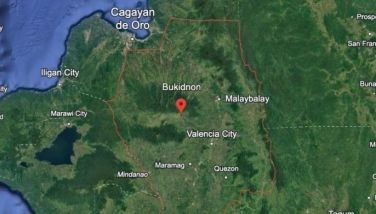230 infected ducks in Bulacan town killed, buried
July 13, 2005 | 12:00am
CITY OF SAN FERNANDO, Pampanga — All 230 ducks found infected with the so-called "H5 low pathogen" Asian bird flu virus have been killed and buried in the farm which had raised them in Barangay Pungo in Calumpit, Bulacan, a Department of Agriculture (DA) official said yesterday.
Dr. Romeo Manalili, DA quarantine chief for Central Luzon, told The STAR that experts have agreed that the virus strain that infected the ducks was most likely not contagious.
"The case of the infected ducks was announced only last Friday, but the infection was uncovered as early as two weeks before. If the virus strain were infectious, the remaining ducks and the other poultry in the farm would have been infected by now since it takes about three to 14 days for the symptoms to show," Manalili said.
"Normally in case of infection, about three percent of the poultry dies on the first day, increasing to nine percent on the second day. Up to now, we have not observed any infection in other ducks and chickens in the area," he said.
After blood samples were taken from the infected ducks, Manalili said they were immediately killed and buried before the discovery of the bird flu strain was disclosed to the public.
All ducks and other poultry in Calumpit are being examined at random daily, but there have no indications of infection, he said.
Despite the probability that the bird flu strain does not pose any risk to poultry, a three-kilometer radius quarantine zone has been imposed in Calumpit for one week starting last Monday.
No poultry will be transported to and from Calumpit during the quarantine period.
Manalili said the Bureau of Animal Industry (BAI) confirmed the H5 virus strain in the ducks in Barangay Pungo, but the agency lacks the equipment to ascertain if the virus belongs to the contagious and fatal N1 bird flu strain.
Thus, he said the blood samples of the infected ducks had to be sent to a laboratory in Australia. The results are expected this Friday.
According to Manalili, the H5 strain was discovered after a balut exporter sought a permit from the BAI over two weeks ago.
Dr. Romeo Manalili, DA quarantine chief for Central Luzon, told The STAR that experts have agreed that the virus strain that infected the ducks was most likely not contagious.
"The case of the infected ducks was announced only last Friday, but the infection was uncovered as early as two weeks before. If the virus strain were infectious, the remaining ducks and the other poultry in the farm would have been infected by now since it takes about three to 14 days for the symptoms to show," Manalili said.
"Normally in case of infection, about three percent of the poultry dies on the first day, increasing to nine percent on the second day. Up to now, we have not observed any infection in other ducks and chickens in the area," he said.
After blood samples were taken from the infected ducks, Manalili said they were immediately killed and buried before the discovery of the bird flu strain was disclosed to the public.
All ducks and other poultry in Calumpit are being examined at random daily, but there have no indications of infection, he said.
Despite the probability that the bird flu strain does not pose any risk to poultry, a three-kilometer radius quarantine zone has been imposed in Calumpit for one week starting last Monday.
No poultry will be transported to and from Calumpit during the quarantine period.
Manalili said the Bureau of Animal Industry (BAI) confirmed the H5 virus strain in the ducks in Barangay Pungo, but the agency lacks the equipment to ascertain if the virus belongs to the contagious and fatal N1 bird flu strain.
Thus, he said the blood samples of the infected ducks had to be sent to a laboratory in Australia. The results are expected this Friday.
According to Manalili, the H5 strain was discovered after a balut exporter sought a permit from the BAI over two weeks ago.
BrandSpace Articles
<
>
- Latest
- Trending
Trending
Latest
Trending
Latest
Recommended






























